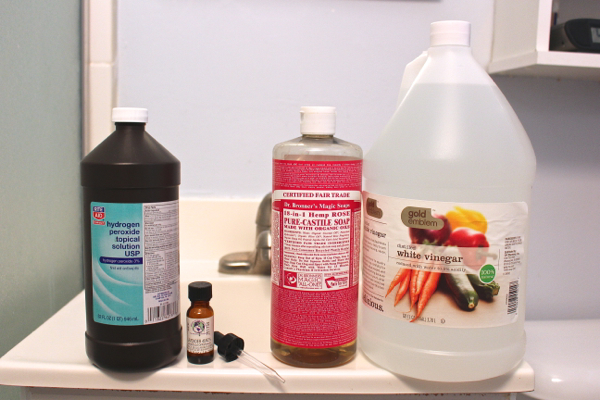
One of my most popular recent posts was a “recipe” (two ingredients, and one of them optional – can I really call it a recipe?) for natural homemade coconut oil”hair repair” treatment. And in writing that post, I realized that I hadn’t posted anything on DIY eco-friendly body care since . . . 2009. What?!!
But now I’m preparing to write this post, and I can’t help but notice that the last DIY green cleaner I posted was my natural homemade liquid dishwasher detergent, and that was back in . . . 2010. Geeze . . .
The funny thing is, I’ve been DIY green cleaning and home-making my eco-friendly body care products this entire time. I’m not quite sure why I stopped posting about them, really. But it’s been years on both accounts, and now – it’s time to remedy that!

I didn’t even realize there was such a thing as daily shower spray. You know, the kind of cleaner you spray on each morning after you hop out of the shower, and you don’t even bother to wipe it off or rinse it down? You just spray it, leave it, and forget it. Umm, how did I not know about this?
My not-boyfriend has an automatic shower sprayer, which is where I learned of such a magical cleanser, and which we hacked to refill with our eco-friendly, all-natural non-toxic awesomeness. But you can also just use a plain ol’ spray bottle, which is what I use for all my homemade cleaning products. Here’s what you’ll need:
1 cup water
½ cup hydrogen peroxide
½ cup vinegar
1 teaspoon castile soap
optional: essential oil for scent, 20 drops


Pour the water into a non-metal mixing bowl, and then whisk in the soap. Add the rest of the ingredients and mix to fully incorporate. The solution will be sort of milky looking, which is fine and totally normal.
Add to an automatic shower sprayer, or store in a spray bottle. Use daily, and watch your biceps widdle away to nothing now that you never have to scrub your dang shower anymore. Hooray!

♥
-
http://blakebakes.blogspot.com/ Blake Martin
-
Susanne
-
http://coconutandberries.com/ coconutandberries
-
skeptk_vegan
-
Leslie
-
Deirdre
-
Rebecca
-
Sarah
-
Rebecca
-
http://bonzaiaphrodite.com/ Sayward Rebhal
-
http://bonzaiaphrodite.com/ Sayward Rebhal
-
http://bonzaiaphrodite.com/ Sayward Rebhal
-
http://bonzaiaphrodite.com/ Sayward Rebhal
-
Peyton
-
http://bonzaiaphrodite.com/ Sayward Rebhal
-
Peyton
-
M



